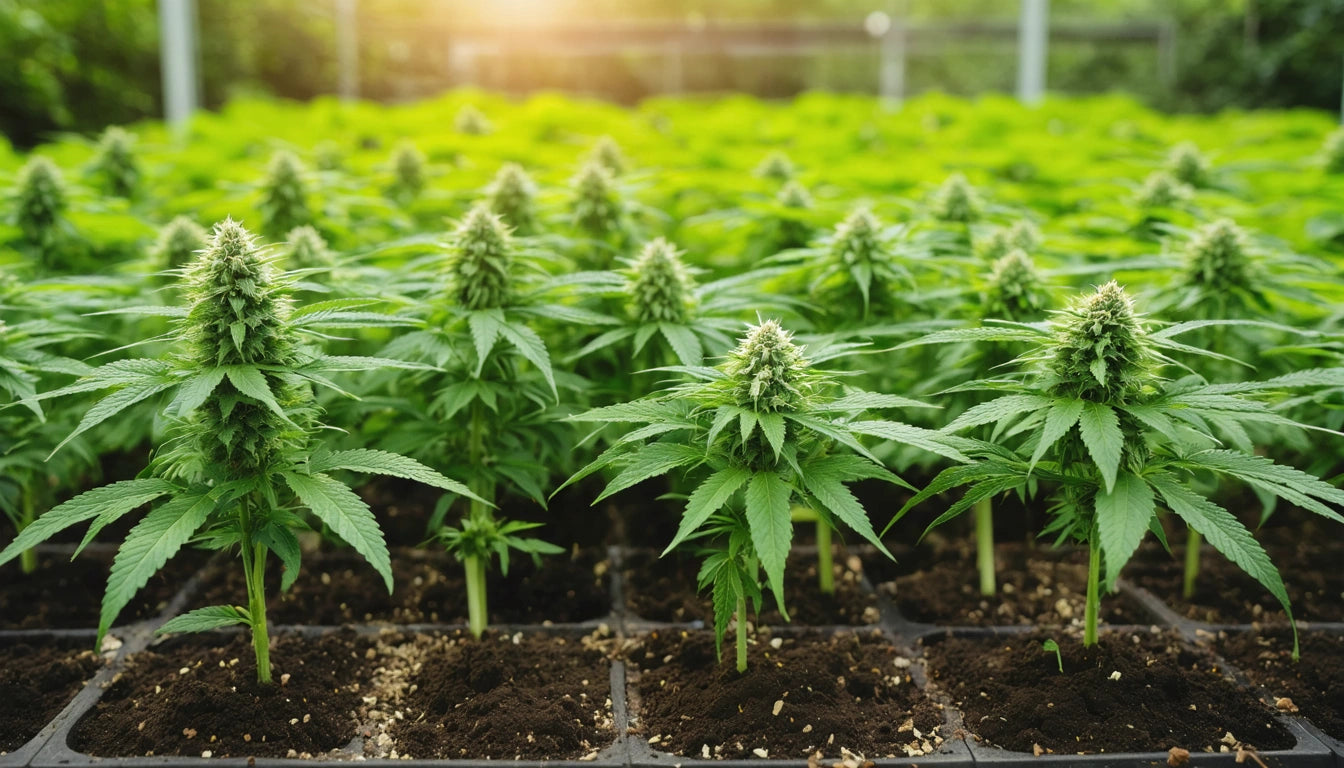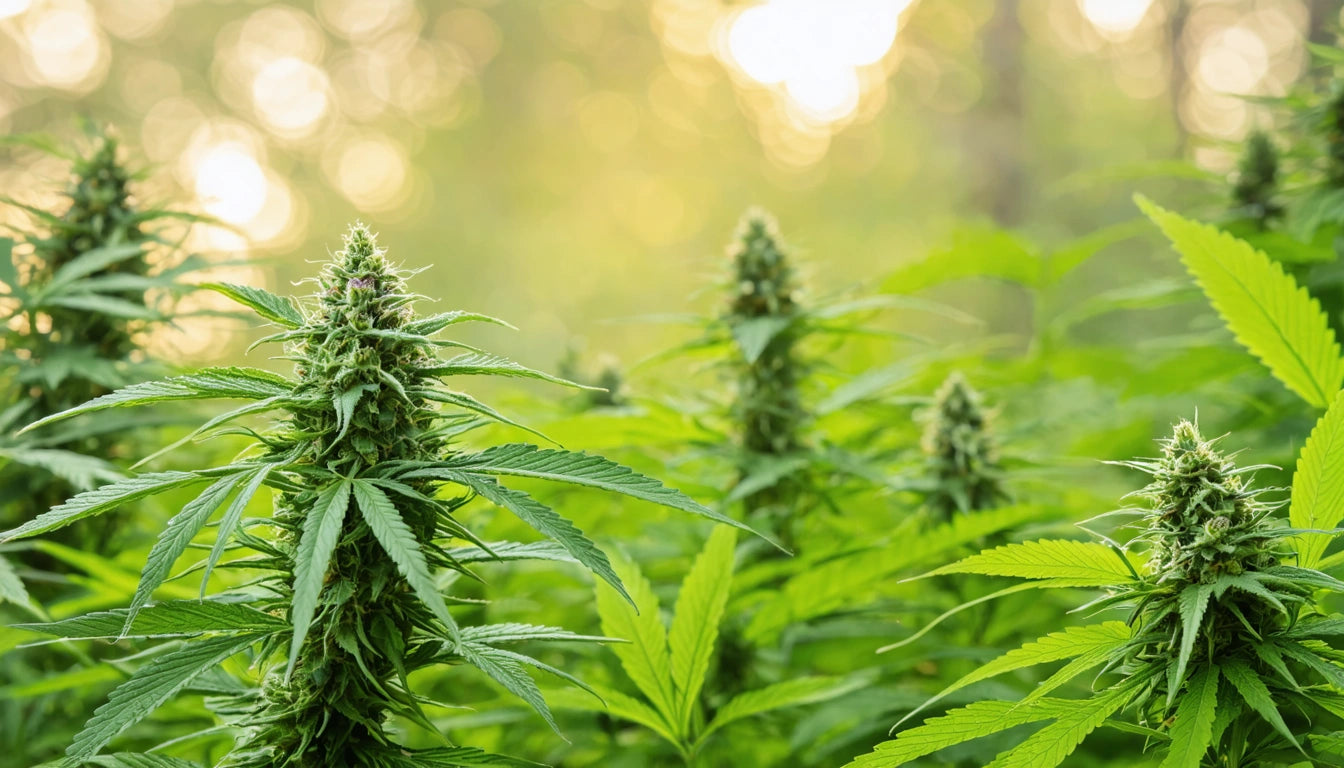Table of Contents
- Soil Growing Fundamentals: Building the Perfect Medium
- Hydroponic Systems Explained: Water-Based Cultivation
- Nutrient Management: Feeding Schedules for Soil vs. Hydroponics
- Environmental Factors: Optimizing Growth Conditions
- Choosing the Right System: Factors to Consider
- Maximizing Yields: Advanced Techniques for Both Methods
Selecting the right growing medium is one of the most crucial decisions for cannabis cultivators. Whether you choose traditional soil or modern hydroponic systems, each approach offers distinct advantages and challenges. This guide explores both methods in depth, helping growers make informed decisions based on their specific needs, space limitations, and cultivation goals.
Soil Growing Fundamentals: Building the Perfect Medium
Soil remains the most traditional and forgiving medium for cannabis cultivation. The ideal cannabis soil provides a balance of water retention, drainage, aeration, and nutrient availability.
Types of Soil Mixes
- Living Soil: Rich in microorganisms and organic matter, living soil creates a self-sustaining ecosystem that requires minimal additives.
- Coco Coir Blends: Combining the water retention of coco with the structure of soil creates an excellent hybrid medium.
- Super Soil: Pre-amended with slow-release nutrients that feed plants throughout their lifecycle.
For optimal results, most cultivators use fabric pots or containers with adequate drainage. When harvesting, proper drying and curing techniques are essential to preserve terpenes and cannabinoids. Many growers also use specialized storage containers with airtight caps to maintain freshness during the curing process.
Hydroponic Systems Explained: Water-Based Cultivation
Hydroponics eliminates soil, instead delivering nutrients directly to plant roots through water. This method typically produces faster growth and higher yields when managed correctly.
Popular Hydroponic Methods
- Deep Water Culture (DWC): Plants grow with their roots suspended in oxygenated nutrient solution.
- Nutrient Film Technique (NFT): A thin film of nutrient solution flows over the roots continuously.
- Drip Systems: Nutrient solution is dripped onto the growing medium at scheduled intervals.
- Ebb and Flow: Periodically floods the growing medium with nutrient solution, then drains it away.
Hydroponics requires more precise monitoring but offers greater control over nutrient delivery. Understanding light cycles and their impact becomes even more critical in hydroponic setups, as plants typically respond more dramatically to environmental changes.
Nutrient Management: Feeding Schedules for Soil vs. Hydroponics
Nutrient requirements differ significantly between soil and hydroponic cultivation. Understanding these differences is crucial for plant health and maximum yield.
Soil Feeding
Soil acts as a buffer for nutrients, allowing for more flexibility in feeding schedules. Organic amendments like compost, worm castings, and bat guano provide slow-release nutrition. Many soil growers follow a "less is more" approach, as overfeeding is a common mistake.
Hydroponic Feeding
Hydroponic systems require precise nutrient solutions with carefully balanced NPK ratios and micronutrients. Most cultivators use a two-part or three-part nutrient system, adjusting the formulation based on the plant's growth stage. Regular monitoring of pH and EC (electrical conductivity) is essential for preventing nutrient deficiencies.
Both methods benefit from understanding essential nutrients for each growth stage, as cannabis has different requirements during vegetative growth versus flowering.
Environmental Factors: Optimizing Growth Conditions
Regardless of growing medium, environmental control remains critical for cannabis cultivation success.
Temperature and Humidity
Cannabis thrives in specific temperature and humidity ranges that vary by growth stage. Vegetative growth generally prefers 70-85 °F (21-29 °C) with 40-70% humidity, while flowering plants prefer slightly cooler temperatures and lower humidity to prevent mold issues.
Air Circulation and CO2
Proper airflow prevents stagnant pockets of humidity and strengthens plant stems. Advanced growers often supplement with CO2 to boost photosynthesis and increase yields, particularly in sealed grow environments.
Environmental management is closely tied to pest prevention. Implementing strategies to prevent mold, mildew, and pests is essential for both soil and hydroponic systems.
Choosing the Right System: Factors to Consider
Several factors should influence your decision between soil and hydroponics:
- Experience Level: Beginners often find soil more forgiving, while hydroponics requires more technical knowledge.
- Space Constraints: Hydroponic systems can be more space-efficient but require room for reservoirs and pumps.
- Budget: Initial setup costs for quality hydroponics are typically higher than soil.
- Time Investment: Hydroponics demands more frequent monitoring but can reduce time spent on watering.
- Growing Environment: Consider whether you're growing indoors or outdoors, as this impacts system selection.
Your choice of cannabis genetics also matters. Some cultivators find that autoflower strains perform better in soil, while photoperiod varieties can fully capitalize on the accelerated growth hydroponics provides.
Maximizing Yields: Advanced Techniques for Both Methods
Once you've established your growing system, several advanced techniques can help maximize yields:
Training Methods
Techniques like low-stress training (LST), Screen of Green (SCROG), and topping help create more bud sites and even canopies. These methods work in both soil and hydroponic setups but may need adaptation based on your specific system.
Harvest Timing
Knowing when to harvest significantly impacts potency and yield. Trichome observation using a jeweler's loupe or digital microscope helps determine the optimal harvest window.
Whether you choose soil or hydroponics, success ultimately depends on consistency, attention to detail, and responding to your plants' needs. Many experienced growers eventually incorporate elements of both approaches, creating hybrid systems that leverage the benefits of each method while minimizing drawbacks.











Leave a comment
All comments are moderated before being published.
This site is protected by hCaptcha and the hCaptcha Privacy Policy and Terms of Service apply.